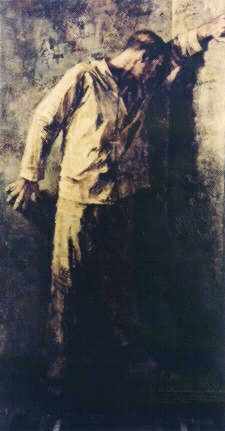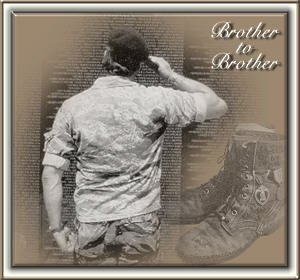|
REMARKS:
Survived to call MAYDAY
SYNOPSIS:
LAM SON 719 was a large offensive operation against NVA communications
lines in Laos in the region adjacent to the two northern provinces of
South Vietnam. The operation was a raid in which ARVN troops would drive
west from Khe Sanh on Route 9, cut the Ho Chi Minh Trail, seize Tchpone,
some 25 miles away, and then return to Vietnam. The ARVN would provide
and command the ground forces, while U.S. Army and Air Force would
furnish aviation airlift and supporting firepower. The 101st Airborne
Division (Airmobile) commanded all U.S. Army aviation units in direct
support of the operation.
Most of the first part of the operation, begun January 30, 1971 was
called Operation DEWEY CANYON II, and was conducted by U.S. ground
forces in Vietnam. The ARVN met their halfway point on February 11 and
moved into position for the attack across the Laotian border.
On 8 February, ARVN began pushing along Route 9 into Laos. The NVA
reacted fiercely, committing some 36,000 troops to the area. The ARVN held its
positions supported by U.S. air strikes and re-supply runs by Army helicopters. |
|
 |
President Nguyen Van Thieu ordered a helicopter assault on
Tchepone,
and the abandoned village was seized March 6. Two weeks of hard combat were
necessary for the ARVN task force to fight its way back to Vietnam.
Randy Ard had been in Vietnam only a few weeks when an emergency call
came in for him to fly the squadron commander to a platoon command post to
work his way down to his Third Platoon, which was in ambush in the northwest
segment of South Vietnam. He flew his Kiowa Scout chopper from the 5th
Mechanized and picked up Lt. Col. Sheldon Burnett, the squadron commander; Capt. Phil
Bodenhorn, Alpha Company commander; and SP4 Mike Castro, Third Platoon
RTO.
Ard mistakenly flew past the command post and west into Laos. Seeing
yellow marking smoke, he took the chopper down lower. It was too late to pull
up when they heard the sound of an RPD machine gun and AK-47's. They had
been tricked into a North Vietnamese ambush.
The helicopter went down fast, and smashed into the brush, coming
down on its side (or upside down, depending on the version of the account). Ard
and Burnett were trapped in the wreckage, but alive. Ard got on the radio
and began mayday calls. Bodenhorn and Castillo, who had been in the rear
seat, got out of the aircraft. Bodenhorn managed to free Ard, but he had two
broken legs and possibly a broken hip. Burnett was completely pinned
within the wreckage and injured, but alive. Bodenhorn and Castillo positioned
themselves on opposite sides of the aircraft for security and expended
all the colored smoke grenades they had, marking their position for rescue.
[Note: Mike Castro's name appears in one account of this incident,
but his fate is not given. He does not appear in a second account from the U.S.
Army Casualty Board.]
Bodenhorn and Castillo soon heard North Vietnamese approaching, and
killed these Vietnamese. The two listened for nearly an hour as others advanced
towards their position from two directions, and 155 artillery rounds impacted very near them. They couldn't understand why they were not
being rescued, unless it was because the enemy was so close to them. A
helicopter flew over, but took heavy fire and left. They decided to leave Ard and
Burnett and escape themselves. They told Ard, who nodded wordlessly.
Burnett was drifting in and out of consciousness. Both men were alive.
Bodenhorn and Castillo worked their way to 80 yards away when a UH1C
came in on a single run, firing flechette rockets which seemed to explode right
on the downed chopper. Later, they watched an F4 roll in for a one-bomb
strike over the crash site. Ard and Burnett were surely dead.
Bodenhorn and Castillo were rescued by ARVN troops an hour later. Ard
and Burnett were classified Missing In Action. The story was released to
reporters at Khe Sanh three days later. The army spokesman accurately described the ambush, but told the press that Burnett had been in radio
contact with the ambushed platoon, and that he and Ard had appeared dead
to
the two escaping officers. The names of the survivors were not released.
General Sutherland stated, ".. the decision was not made to
employ the Air Cavalry and the Hoc Bao to attempt to retrieve either Lt.
Col. Burnett
alive or his body. ..Burnett had no mission nor units in Laos. He had no
reason or authority to take his helicopter over the Laotian border."
After 11 days of heavy resistance, the 11th ARVN Airborne Battalion
fought their way into the area where the helicopter had crashed. The searched
the wreckage and the surrounding area for several days, but found no sign of
the two missing men or any of their belongings or anything to indicate that
either man was buried in the area.
In 1989, a large part of this loss incident was still classified.
There can be no question that Randy Ard and Sheldon Burnett were
abandoned
by the country they served.
Losses in LAM SON 719 were heavy. The ARVN suffered some 9,000
casualties, almost 50% of their force. U.S. forces incurred some 1,462 casualties.
Aviation units lost 168 helicopters; another 618 were damaged.
Fifty-five air crewmen were killed in action , 178 were wounded and 34 were missing
in action. There were 19,360 known enemy casualties for the operation
lasting
until April 6, 1971.
 |
Nearly 600 Americans were lost in Laos during the war in Vietnam.
Although the
Pathet Lao stated on several occasions they held "tens of
tens" of American prisoners, Laos was not included in the agreements ending
American involvement in the war, and the U.S. has not negotiated for the freedom
of these men since that day. Consequently, not one American held in Laos
has ever been released.
These Americans, too, were abandoned. |
Letter to
President George W. Bush
Letter to First Lady
Laura Bush
Letter
to Congressman John Mica
|